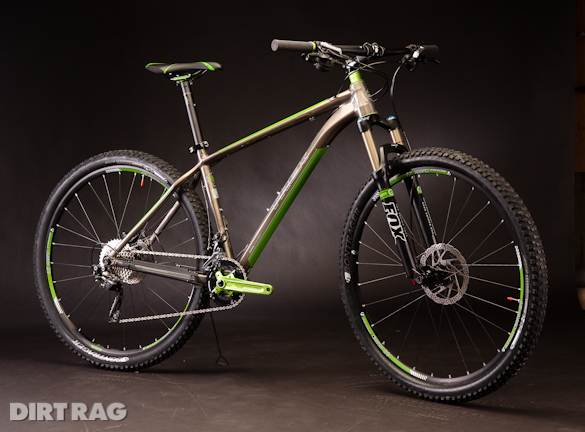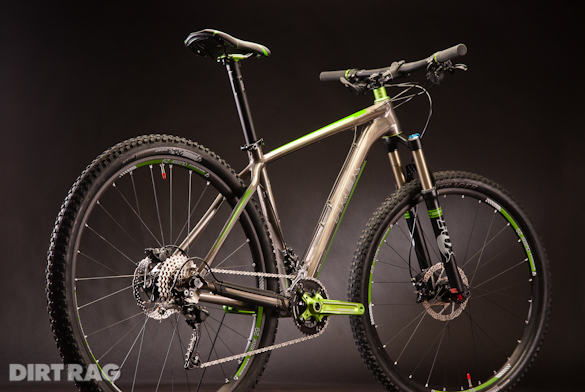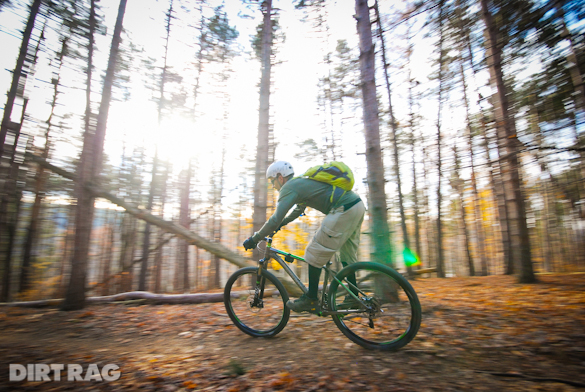Review: Trek Stache 8
Originally posted on February 6, 2014 at 22:04 pm
The Stache is an all-new addition to Trek’s 2013 lineup, a rugged trail bike designed to be versatile enough to serve as the elusive “one bike that’s does it all.”
Rather than give the Stache a substantially different layout, Trek adapted their tried-and-true 29er G2 geometry. The Stache’s 68.6 degree head angle is about a degree slacker than Trek’s 100mm-travel Superfly, and its 12.44-inch BB height is 0.16-inch taller. Both models have 17.5-inch chainstays.
The aluminum frame looks quite robust, thanks to the large hydroformed main tubes, tapered head tube, 142x12mm thru-axle rear and press-fit bottom bracket. Bonus points for ISCG tabs and dropper post routing (including stealth routing). The seat tube has a flattened shape at the bottom for tire/mud clearance (which hardly seems necessary, considering the ample room provided by the 17.52-inch chainstays). The total package looks agile and muscular, but not burly. With pedals and a bottle cage, the Stache 8 weighed in at 27.5 lbs.

The $2,420 Stache 8 comes with a Fox Evolution Series 32 Float fork (with CTD) and a solid 2×10 kit. Proven Shimano SLX parts include brakes, shifters and front derailleur (there’s an XT upgrade on the rear). The Bontrager Duster tubeless-ready wheels and meaty Bontrager 29-3 Expert 29×2.3 tires are ready for rough-and-tumble action.
I found that the Stache was neither a slack play bike, nor was it a razor-quick race machine. The bike’s handling fell in between those two extremes. Dare I describe the Stache’s handling as neutral? I think I just did.

For some, neutral may imply boring. But I feel that neutral handling is key to the Stache’s versatility. Some bikes tend to dictate a specific riding style, while the Stache seemed to politely wait for me to make the first move.
When I was feeling frisky, I found that the best approach was to adopt an athletic “ready” position. You know, butt out of saddle, pedals level, knees and elbows bent slightly. Getting the most out of fast and flowy trails was best approached by dipping the handlebars to initiate turns, keeping the bike leaned over as it carved through the corner and then snapping the bars back to complete the turn. Repeat as necessary, until size of grin reaches desired level.

However, I’m not all aggro all the time. There are plenty of days when I ride to mellow out, clear my head and get away from it all. There’s something therapeutic about tooling along, threading tight singletrack and picking through the occasional rock garden. At slower speeds, the Stache felt nimble and, thanks to the absence of any front wheel flop, predictable and reassuring.

My riding position was well centered over the bike. I could sit and grind up steep climbs without having to execute any advanced gymnastics to keep the front wheel planted and the rear wheel digging in.

When pointed down the hills, the Stache felt stable and capable, just not particularly playful. Frame flex was a non-issue. The Stache felt solid when railing through corners, not to mention rumbling over rough terrain. The Stache enjoys crushing rock gardens and blasting over roots.

I found the Trek Stache more than capable to serve as my main trail bike. Or my only trail bike, for that matter. I feel that the 17.5-inch chainstay length (longest of the bikes in this group test) contributed to the bike’s stability, but detracted from its playfulness. It took some extra body English to loft the front wheel and get my weight over the rear wheel when executing moves, such as wheelie-drops. It just took a little coaxing, but the Stache could be a lot of fun.

Vital stats
- Top Tube: 24.4-inches, 630mm
- Wheelbase: 44.84-inches, 1,139mm
- Head Angle: 68.6 degrees
- Seat Tube Angle: 72.0 degrees
- Bottom Bracket: 12.44-inches, 316mm
- Chainstay Length: 17.52-inches, 445mm
- Weight: 26.1 lbs., 11.8kg
- Sizes: 15.5”, 17.5”, 19” (tested), 21”, 23″
- Price: $2,420
- Made in: Taiwan
